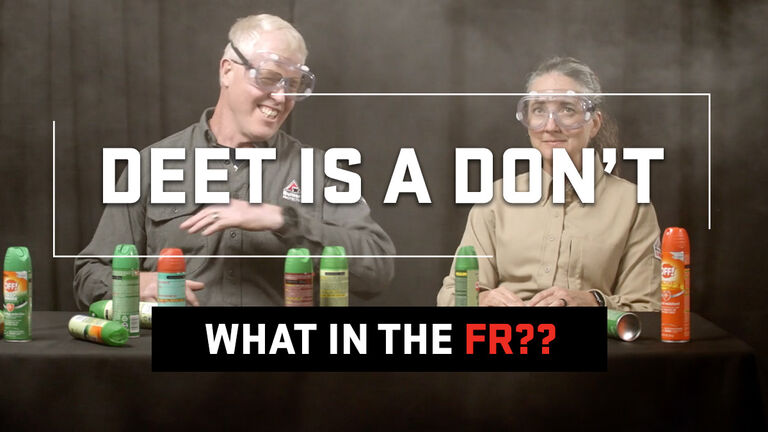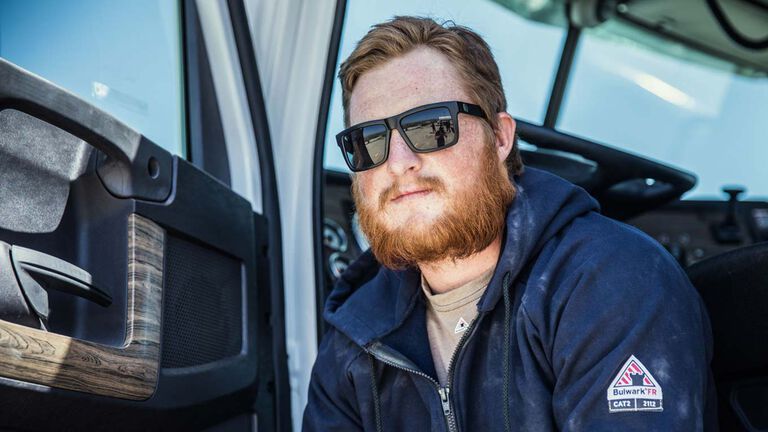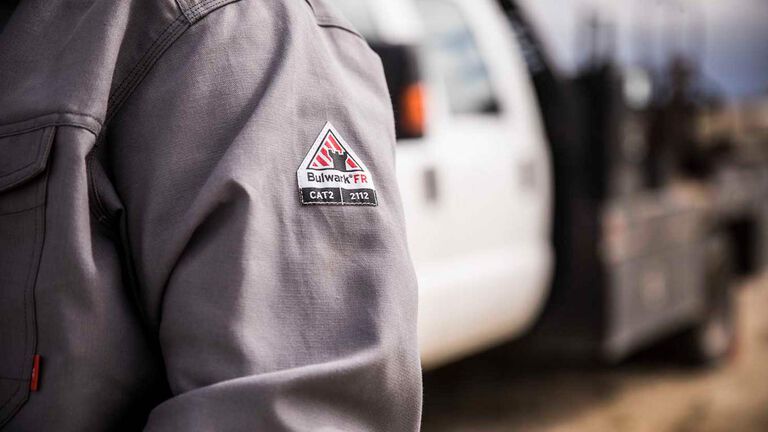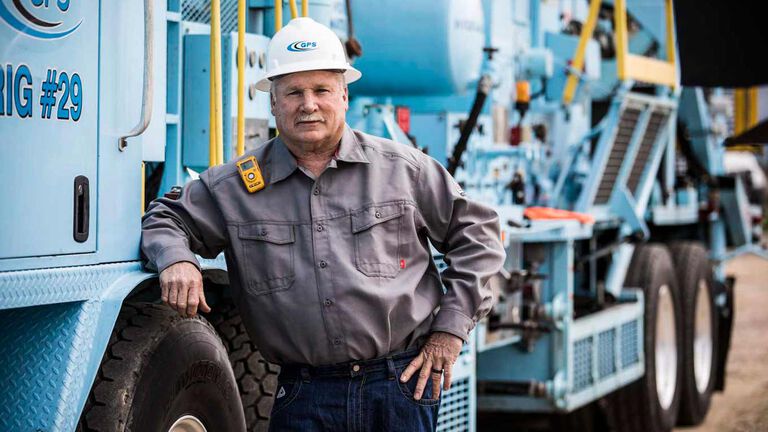 Industry News
Industry News
Why is FR So Expensive?
Discover why Bulwark FR's flame-resistant clothing is worth the investment. Learn about our commitment to safety, testing, and the innovation behind our pricing.
Read More Ask An Expert
Ask An Expert
70E Made 70 Easy
More and more General Industry safety managers are looking to get their teams who work on energized electric systems into arc-rated protection. So, we took the extra effort to film a deep dive into the relevant standard, NFPA® 70E. Follow our Sr. Technical Training Manager, Derek Sang, as he covers it all, from what to who to how—and even the “why” of choosing a daily wear approach.
Read More Ask An Expert
Ask An Expert
Replacing FR
This episode of “What In The FR??” tackles when to make the call to replace worn-out or downright damaged FR — with a couple “what in the world were they thinking?” examples of what NOT to do.
Read More - Staying Compliant.jpg?sw=768&sfrm=png) Ask An Expert
Ask An Expert
Staying Compliant
This episode of our “What in the FR??” series covers garment compliance. Check out the adjustments and alterations workers make, still believing they’re prepared for a fire hazard. Spoiler alert: they aren’t. But have no fear! Derek and Allison are here to turn W-T-F no-nos into simple, A-B-C yeah-yeahs.
Read More Safety Updates
Safety Updates
Uncompromising Comfort Meets Non-meltable Protection
Introducing Non-FR 100% Cotton. A cost-effective way to clothe your crew in non-meltable protection.
Read More Ask An Expert
Ask An Expert
Washing FR
This episode of our “What In The FR??” series covers outlandish ways workers clean and wash their FR. Resident FR experts Derek Sang and Allison Bloodworth explain how to properly care for your FR garments and why things like kerosene and hairspray can lead to disaster.
Read More Ask An Expert
Ask An Expert
Non-FR No No’s
This installment of our “What In The FR??” series tackles why non-FR garments are a no-no. Our two FR experts, Derek Sang and Allison Bloodworth, cover the wackier things we’ve heard—like adding flammable accessories to FR garments!—and explain how to avoid them.
Read More Safety Updates
Safety Updates
THE BENEFITS OF FR STATION WEAR GO WAY BEYOND PROTECTION
Turnout gear, while a marvel of innovation and insulation, can and does get overwhelmed. And when it does, firefighters are at risk of burn injury – and what they’re wearing can exacerbate the damage. Read more about the factors that motivate stations to adopt FR station wear.
Read More Ask An Expert
Ask An Expert
DEET IS A DON’T
DEET debuts in our new video series called “What In The FR??” Two of our FR experts, Derek and Allison, cover the wackiest ways we’ve heard in FR—like using DEET. Watch them explain what workers can do instead to stay safe and compliant.
Read More Industry News
Industry News
All-risk Calls Make FR Station Wear and Base Layers a Must-Have
Not every all-risk call requires actal firefighting, but there's still the risk of sustaining a burn injury. Learn how and why the right FR should be worn to protect firefighters properly in the face of a potential fire hazard.
Read More Industry News
Industry News
FR STATION WEAR: A CRITICAL LAYER OF FIREFIGHTER DEFENSE
Employers and safety managers have long looked to flame-resistant (FR) and arc-rated (AR) garments to help protect workers from injury due to flash fire and arc flash.
Read More Ask An Expert
Ask An Expert
The Mechanisms Between Heat and Cold Stress
Our bodies are continuously working to maintain homeostasis in regard to our core temperature, which is approximately 98.6 degrees. However, when outside temperatures rise, our bodies can overheat, and the excess must be released to avoid heat-related illness.
Read More Ask An Expert
Ask An Expert
Jobsite Best Practices For Mitigating Heat and Cold Stress
There’s no single magic bullet for simultaneously protecting workers from arc flash and flash fire hazards as well the risks of heat and cold stress. PPE alone is not enough, and neither are weather-related engineering controls. However, when combined, and with proper education, you can have quite an effective solution.
Read More Ask An Expert
Ask An Expert
Choosing FR/AR Garments to Keep Workers Warm
Employers and safety managers have long looked to flame-resistant (FR) and arc-rated (AR) garments to help protect workers from injury due to flash fire and arc flash. Because these garments are designed using specially engineered, self-extinguishing fabrics and are certified to rigorous testing standards, they can help prevent or lessen the severity of injury.
Read More Ask An Expert
Ask An Expert
Choosing FR/AR Garments to Keep Workers Cool
Employers and safety managers have long looked to flame-resistant (FR) and arc-rated (AR) garments to help protect workers from injury due to flash fire and arc flash.
Read More Industry News
Industry News
Why Wearing FR Gloves Matters
Bulwark is proud to introduce the iQ Series® Advantage collection NFPA® 2112 compliant FR (flame resistant) gloves—the market’s first-ever, comprehensive line of protective gloves for workers who depend on their hands to get the job done, despite the hazards.
Read More Ask An Expert
Ask An Expert
How Do You Stay Compliant in Hot Weather?
Our FR safety expert Derek Sang explains how layering when it’s hot can help wearers stay cool and compliant. With light layers, you can mimic your body’s natural cooling process and maintain your safety. Learn more about the various reasons why layering can be an effective way to beat the heat while following FR guidelines.
Read More Ask An Expert
Ask An Expert
Can You Put A Price On Compliant FR?
In the long run, high quality FR is a more economical choice and saves you the time of replacing lower-cost products. Bulwark’s FR safety expert Derek Sang explains why pricing is an important factor in your FR selection process.
Read More Industry News
Industry News
Bulwark Independence Day
This Is Our Independence Day.
Read More Ask An Expert
Ask An Expert
What's Wrong with Task-based FR?
In short, you should wear your FR/AR all day, every day.
Read More Industry News
Industry News
Women in Safety: Alice Stoll and the Stoll Curve
Just like all of us here at Bulwark FR, Alice Stoll (1917–2014) was committed to taking FR to the highest degree.
Read More Ask An Expert
Ask An Expert
Firefighters: Is your station wear helping or potentially hurting you?
Bulwark Protection’s Technical Training Manager Derek Sang discusses why firefighters might think wearing polyesters as day-to-day station wear is no big deal—but how misguided that notion can be.
Read More Ask An Expert
Ask An Expert
How do you calculate the total Arc Rating of your FR garments when wearing
A: Adding the Arc Ratings of individual garments is not permitted. In order to determine the layered Arc Rating of our products we send them to an independent test laboratory.
Read More Ask An Expert
Ask An Expert
What are the basics of AR clothing for NFPA® 70E?
NFPA® 70E just released its 2021 edition and Bulwark Protection’s Technical Training Manager Derek Sang covers highlights from the new edition and best practices.
Read More Ask An Expert
Ask An Expert
KEMA Arc Flash Project
In 2019, our resident FR/AR expert Derek Sang conducted the first-ever Bulwark 201 training seminar focused exclusively on the arc flash hazard. The highlight of that training was the opportunity to conduct live arc flash demonstrations at the KEMA High Voltage Laboratory.
Read More Ask An Expert
Ask An Expert
Do the FR properties wear out of my FR clothing?
A: In short: the answer is no.
Read More Industry News
Industry News
Oil & Gas. At Heart & Soul.
For 50 plus, proud, industry-leading years. And counting. That’s how deep our commitment to oil & gas runs at Bulwark FR.
Read More Relentless Protectors
Relentless Protectors
The Relentless: Profiles in the Bulwark Difference
We sat down with Business Development Manager Karen Hearn, Business Development Manager and Bulwark Certified Trainer Rick Fisher, and Director of Sales Tim LeMessurier to talk about what drives them to approach the work they do with relentless dedication. Listen to their moving responses behind the passion they bring to Bulwark Protection.
Read More Relentless Protectors
Relentless Protectors
Relentless Protector: George Harmer
George Harmer, the Safety Director for General Production Service (GPS), sat down for a Zoom chat with his longtime friend and Bulwark Business Development Manager, Rick Fisher. They talked about being a Safety Manager, what it means to be in charge of other people's safety, and how Bulwark helps empower GPS to protect their employees.
Read More Industry News
Industry News
Bulwark Protection Joins Partnership for Electrical Safety.
It is our pleasure to announce Bulwark Protection is now a proud member of the Partnership for Electrical Safety.
Read More Industry News
Industry News
The Ultimate Protection for the Great Outdoors
We’re proud to introduce our new line of FR workwear using Insect Shield. We took 13 of our top garments for men and women—including shirts and pants from the iQ Comfort Series, jean and hi-vis favorites, and our ultra-advanced Mobility Coveralls—and turned them into the ultimate PPE for the outdoors.
Read More Industry News
Industry News
The Science Behind Insect Shield
Bulwark is thrilled to announce that we will be launching a new line of Bulwark FR clothing with Insect Shield® technology. This patented technology is proven to effectively repel insects ranging from mosquitoes to ticks and flies to fleas, with protection that lasts through 50 washes. So you can work pest-free and confidently compliant, no matter what Mother Nature has in store.
Read More Safety Updates
Safety Updates
Protection for the wildest of fires.
As any fire service worker can tell you, fighting fires is complex. There’s more to it than you may think. And those complexities are further compounded by the environment where the fire burns.
Read More Safety Updates
Safety Updates
The Fundamentals of Lab Safety
While proper PPE is a crucial part of the protection equation, there’s more to lab safety than having the right gear. Our experts created a list of 15 fundamental practices to ensure this environment of ingenuity is one of protection, too.
Read More Ask An Expert
Ask An Expert
Swatch Kit 101
Chemical testing methodology for Bulwark CP's Swatch Kit.
Read More Safety Updates
Safety Updates
Managing Cold Stress
Cold stress may not be as well-known as heat stress, but cold stress incidents can be equally dangerous.
Read More Industry News
Industry News
Top 5 Outerwear Considerations
It’s important to be dressed properly while on the job, especially as winter approaches. Our FR experts give their top five tips when it comes to choosing the right FR clothing, so you can prepare for the cold weather.
Read More Industry News
Industry News
Re-Tested and Re-Certified. So You Can Stand Reassured.
With the updates to NFPA 2112, we at Bulwark have been busy with an extensive, and extremely complex review process in collaboration with UL, our third-party certifier.
Read More Ask An Expert
Ask An Expert
What is the difference between Inherent and Treated FR?
A: Inherently flame resistant fabrics are engineered to be flame-resistant at the fiber level, and do not require any additional finishing. Treated fabrics undergo a chemical process to impart FR properties.
Read More Ask An Expert
Ask An Expert
What is a Hazard Risk Assessment?
A: It’s the first step in the creation of any PPE program. Federal regulations require employers to assess the workplace to determine if hazards that require the use of personal protective equipment are present or are likely to be present
Read More Industry News
Industry News
Is Your FR Program Overlooking Undergarments?
For your FR program to be fully effective, you need to look beyond just choosing the right gear for the environment you and your crew are working in. You need to examine every layer closely, beginning with your base layers.
Read More Safety Updates
Safety Updates
Top 5 Lab Safety Tips
To help promote lab safety, Workrite Uniform Company — a manufacturer of protective workwear, including lab coats — recommends following these safety tips.
Read More Industry News
Industry News
Top 10 Things to Consider Before You Buy FR
FR experts here at Bulwark have put together a list of their top 10 things to consider when buying FR to ensure the FR clothing you choose will keep your guys safe and compliant, no matter what the job throws at them.
Read More Industry News
Industry News
Multi-Hazard Protective Clothing
Flame-resistant (FR) clothing manufacturers have begun developing garments that meet the requirements of both NFPA 2112, the Standard on Flame-Resistant Garments for Protection of Industrial Personnel Against Flash Fire, and NFPA 70E, the Standard for Electrical Safety in the Workplace.
Read More Ask An Expert
Ask An Expert
What is the difference between NFPA® 2112 and 2113?
A: In short: NFPA® 2112 is the standard for manufacturers that specifices garment performance requirements. NFPA® 2113 is the standard for safety professionals that explains the hazard assessment, garment selection, care, and maintenance.
Read More Ask An Expert
Ask An Expert
Know Your Hazards
A: A flash fire is a rapid moving flame front that can be caused by a diffuse fuel, such as dust, gas, or the vapors of an ignitable liquid, without the production of damaging pressure.
Read More Safety Updates
Safety Updates
What’s the Underlying Danger of Non-FR Undergarments?
A: Increased burn injury is the danger. In the event of a flash fire or electric arc, some heat will inevitably pass through the outer layer of FR and cause a T-shirt to melt if it is made from synthetic materials.
Read More Safety Updates
Safety Updates
FR Safety: Your General Duty
Bulwark arms you with FR training and expertise to help ease the pressure and keep your guys safe.
Read More Safety Updates
Safety Updates
The ABC’s of PPE
You must select the right garments based on the unique hazards of your industry, in addition to important factors like comfort, durability and laundering. We’ll provide you with a step-by-step process for designing, implementing and maintaining your PPE program.
Read More Ask An Expert
Ask An Expert
What is ATPV, and how is it used in your hazard assessment?
A: ATPV stands for Arc Thermal Performance Value, it measures the amount of incident energy that your FR garment can protect you from before the onset of a 2nd degree burn. A: In short: all AR is FR but not all FR is AR
Read More Ask An Expert
Ask An Expert
Is DEET Flammable?
A: Yes. DEET is HIGHLY flammable. Any flame resistant clothing sprayed with it has the potential to ignite and continue to burn if exposed to an ignition hazard.
Read More Industry News
Industry News
Top 10 Laundry Tips
Proper care and maintenance of FR/AR clothing is essential to its effectiveness. We’ve compiled a list of our top 10 tips to maximize your PPE’s FR protection, wash after wash.
Read More Industry News
Industry News
What’s in a Label?
Even after assessing hazard risks and selecting the appropriate FR clothing, it also falls on the employer to ensure that each garment truly matches the hazard it’s designed to protect against.
Read More Ask An Expert
Ask An Expert
What’s the difference between FR & AR?
A: In short: all AR is FR but not all FR is AR.
Read More Safety Updates
Safety Updates
Heat Stress: By The Basics, And The Base Layers.
“How do I help my guys stay cool in the hot summer months?” That may be the #1 question we at Bulwark receive this time of year, every year. The world’s #1 FR brand is here to help guide you with some cold, hard facts.
Read More Industry News
Industry News
iQ Series® Garments Made with Nomex® Comfort Win Innovation Award
Bulwark® Protection and DuPont Safety & Construction are pleased to announce that the iQ Series® garment collection made exclusively with DuPont™ Nomex® Comfort fabric has received a 2020 Innovation Award from NAUMD.
Read More